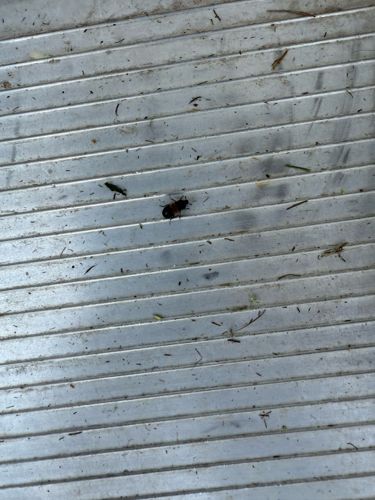Cockroach
Scientific Name: Various species, e.g., Periplaneta americana (American Cockroach), Blattella germanica (German Cockroach), Blatta orientalis (Oriental Cockroach)
Order & Family: Order Blattodea, Family Blattidae (or various families within Blattodea, depending on the specific species)
Size: Typically 1.5 cm to 5 cm (0.6 to 2 inches) depending on the species. The one in the image appears to be on the smaller side, possibly a German cockroach nymph or a smaller adult species.

Natural Habitat
Cockroaches prefer warm, dark, and humid environments. They are commonly found in kitchens, bathrooms, basements, and areas with food preparation and storage. They can infest homes, restaurants, hospitals, and other buildings.
Diet & Feeding
Cockroaches are omnivores and scavengers, eating almost anything organic. This includes food scraps, decaying matter, sweets, starches, grease, meat products, pet food, and even non-food items like paper, glue, hair, and dead insects.
Behavior Patterns
Cockroaches are primarily nocturnal and gregarious. They can run very quickly and are known for their ability to hide in cracks and crevices. They reproduce rapidly, laying egg cases (oothecae) that contain multiple eggs.
Risks & Benefits
Risks: Cockroaches are considered pests because they can spread bacteria (like Salmonella and E. coli), allergens, and diseases. Their presence can trigger asthma attacks, especially in children. They can contaminate food and surfaces. Benefits: In natural ecosystems, some species play a role as decomposers, breaking down organic matter. However, their role as pests in human environments far outweighs any perceived benefits.
Identified on: 8/27/2025